by Heather T. | Nov 30, 2021 | Blog, Opinion
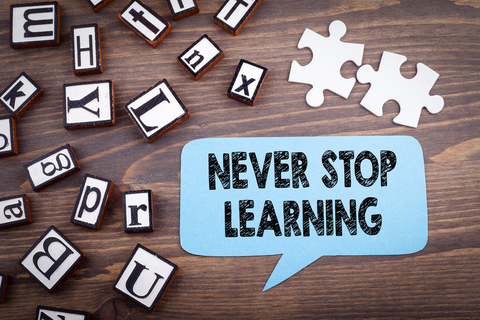 I recently did a Toastmasters two-part speech project and thought it would make a good blog post. The project was to give a speech and then give the speech again based on the first speech’s evaluation.
I recently did a Toastmasters two-part speech project and thought it would make a good blog post. The project was to give a speech and then give the speech again based on the first speech’s evaluation.
I ended up giving this short speech to three different Toastmasters clubs, one club is the club I am coaching, and the feedback I got from all of them was pretty interesting.
In all three meetings, heads nodded, and the comments afterward were, “Yes, we have ourselves done all of these things, both personally, in business and leadership situations.” I know I have as well in the past and have tried my best to cut them out.
Dan Rockwell has been one of my favorite blog writers for years and most definitely one of my most favorite leadership article writers. His posts don’t always have the answers and the solutions to things, but they make you THINK!
From a leadership perspective, that is invaluable because there are no perfect solutions to leadership issues.
Every situation is unique, and what works for one doesn’t necessarily work for another.
Gaining some insights about how people react and stimulating your brain into thinking about scenarios that may happen or have already happened gives you an awful lot of insight into yourself and how you deal or would deal with things that may come up.
He recently wrote a blog post, 12 Things Smart Leaders Don’t Say, and it really got the wheels turning a bit more than usual.
His blog has 12 questions, but I cut it down to six (technically seven because I combined two) for two reasons, my first speech when I based it on my additional commentary to his questions was too long (almost 12 minutes instead of the target 5-7), and when I started to rewrite it, I found that these questions resonated with me more than the others, mostly because they made me “think” about them more myself.
Question #1.
Dan writes: Don’t say, “You should have. Why didn’t you? and “I should have”
He comments: ‘Should have’ is backward facing. Do your best to speak into the future.
Instead of shoulding-yourself, say, “Next time.”
I’m adding to this, “YOU should have” is very negative, it’s a blame game, and something parents do to guilt their kids and makes people feel small and insignificant. “Next time” is a great starter, but adding, “Let’s try this next time” is even more encouraging.
In leadership, it’s also worth considering that maybe the “you should have” is really on you for not providing enough information or direction to the person that “should” have done something. Is it that person’s “fault” something went sideways, or was it your own?
From a leadership perspective, I think of all of the questions, this should be the biggest takeaway for people in management. Is it “really” an employee’s fault or ?
Question #2. (Dan’s #3)
Dan writes: Don’t say: What can we do about that?
He comments: ‘We’ is a tiny act of cowardice that softens the blow of responsibility.
“What could ‘you’ do next,” is better than, “What could ‘we’ do next?” (Unless you are planning to actively participate.)
It’s insincere to say ‘we’ when you really mean ‘you’.
I’m adding to this, Toastmasters tries to teach us to say “we” because it’s inclusive and that’s what leaders are supposed to say, but too often leaders, both in organizations and in business, say “we” but leave the actions and the follow-up to others, most often the ones that need the help most.
Leaving someone hanging is passing the buck, and it’s saying it’s not that leader’s problem. If you are truly going to say “we,” MEAN it and participate. Please don’t put it on someone else.
If you say “you,” then follow up and give the person or the group some tools and directions to fix the problem or issue and the ability and assistance to solve it, don’t just leave them hanging in the wind.
Question #3. (Dan’s #4 & #5)
Dan writes: Don’t say: It’s simple AND It’s easy.
He comments: What’s simple to you is often difficult for others. Judge people through the lens of their experience and strength, not yours.
I run into this all the time. In Toastmasters, Pathways is a good example. I think it’s easy, I’ve also been using it since it literally first rolled out, and I’m in the interface several times per week. For many others, it’s not easy, and when you don’t use something all the time, it’s not “simple.”
I hear marketing people say this all the time about using social media, and it drives me bonkers. “It’s so simple, and it’s SOOOOO easy to do.”
Well that’s because they swim in it all day long, for business people who actually have other things to do, like run their businesses, it’s not easy, it’s not intuitive, there are no big red buttons and guides that say do this, do that to proceed to the next step.
It’s also a belittling comment because it makes people think they are not smart enough for not “getting” something that is according to someone else “easy” or “simple.”
When I do SCORE mentoring, I also run into this quite a bit with clients who are frustrated that they don’t “get” social media, website development, or SEO and have been told by someone else that it should be easy.
Why should they get it? It’s not their fields, yet some marketers out there make people feel small by saying things like, “oh, that’s easy, you shouldn’t have any problem with it.”
I don’t know how many times I’ve caught myself starting to say that and then booted myself into a reality check. And I freely admit, I used to be guilty of saying this to people myself and had a massive wakeup call a couple of years ago.
Question #4. Dan’s #8
Dan writes: Don’t say: Don’t you agree?
He comments: Questions that begin with ‘don’t’ insult people’s intelligence and pressure them to agree. Who’s going to say, “No,” when you ask, “Don’t you agree?”
Don’t you agree is also pressure on people to “make” them agree, so they feel like they are a part of the group, it goes back to the comment “You should have” it’s not just insulting to people and pressuring them, it’s also giving a guilt trip (funny how guilt trips come up twice in things we shouldn’t be saying, and how learned mannerisms as well as phrases creep into our speech as adults). A good alternative is “what do you think? I value your opinion and your experience or expertise.”
Don’t you agree it is a lot like “With all due respect”….. Every time I hear someone say that I cringe, because I have rarely heard anyone say that and then not completely tear apart or disregard the other person’s opinion. I’d add that to the list of things that Leaders should probably stay away from saying.
Question #5. Dan’s #10
Dan writes: Don’t say: But
He comments: Never say ‘but’ after saying something good. Try using ‘and’ when you’re tempted to use ‘but’.
‘But’ is an eraser.
But is not only an eraser but also a contradictor, You did a great job with your speech, and I really like the examples BUT>>>>>>>>>>>> Terrific job with that presentation and you really impressed the client BUT>>>>>>>>>>>>
In Toastmasters But is a filler word, as is And, but the grammarian and ah counter are more likely to flag you on But as a filler word because it doesn’t lead into anything else, it contradicts and it fills space where it doesn’t have to.
I agree that AND is a good substitute. Think of it in the context of doing an evaluation, or giving feedback to an employee, “Here are some great things about your speech AND here is a little bit of room for improvement. Fantastic job with that report, I particularly appreciated you including next year’s financials AND maybe next time can we add an additional 6 months worth?
Question #6. Dan’s #12
Dan writes: Don’t say: Nice job.
He comments: Be specific, not vague, when giving compliments. What was ‘nice’ about it?
That was a really “nice” speech, Eh? What does that mean? Was it sugar and spice and everything nice? Was it nicely wrapped in a box with a pretty bow? It was nice, because………………… ?
I used to work with a fellow chef at a resort with multiple restaurants that was always saying to his staff, “Nice Job, Nice Job.” His employees used to mock him for it because he would never give specifics, and it came across as insincere. He thought from a leadership perspective it sounded good to say that to staff, and it became like an automatic reflex, but his employees hated it.
Give some specifics, “Nice job with that catering order today, the clients were really happy with everything, and the bride especially liked the vegetable canapes.”
What we say as leaders defines us, and we can either help lift people up or drag people down, and being cognizant of what we say and how we say it makes us a good leader or someone who has some work to do.
Sometimes little things like wording both verbally and written can make a huge difference especially when giving feedback to someone.
Original post here and CC License for Mr. Rockwell’s post attribution.
by Heather T. | Nov 9, 2021 | Blog, Marketing, Operations, Social Media
 This is an updated post on one I had done way back in 2010 (yikes it’s hard to believe that it’s been over decade, but still relevent) with bit more information and a couple of additional ideas.
This is an updated post on one I had done way back in 2010 (yikes it’s hard to believe that it’s been over decade, but still relevent) with bit more information and a couple of additional ideas.
I thought it might be time to update it, as it’s one of the most common questions I get from people, even when I tell them you know………. there are a ton of ideas and post ideas out there already floating around and don’t forget to look at what your competitions doing,
Sometimes people want some more specific ideas, so I thought it was time to give the post a little spiff up. I do find it kind of amusing that the old post refered to “fan pages”, Facebook’s original name for a business page.
(Keep in mind many of these could be in visual or image formats including video) Many can also be used for blog posts with some additional information and content. Visual/Image posts are best for Instagram. Linkedin business and personal pages, Facebook business pages and groups, and Twitter, it is best practice to try to share an image with text.
*Don’t forget to share links to your website often as well.
The number one mistake in using social media is forgetting to add targeted links to posts. People will not look for your website link if they don’t see it in the post itself.
If you have a product or service, you are promoting on social media make your links count. If you are talking about a particular service you offer, have the post link go to your services page where you talk more about the service, NOT to your homepage, you don’t want to make people have to hunt.
- A promotion.
a. Come and stay during the month of March and get two free ski tickets.
b. St. Patrick’s Day Special, get a complimentary green beer & popcorn with an order of bangers & mash (*must be 21) = 117 characters, still room for using a shortened link on Twitter.
c. Get double points on your Ace rewards card with every hardware purchase the first week of March.
d. With a purchase of any Don Fredo jewelry, get a free earring cleaning kit.
e. Get a full hair coloring treatment and receive a free trim.
f. At your next tire alignment, get a free oil change.
g. New accounting customers get a 10-minute free business analysis.
- A sale.
a. Thursday nights are half-price appetizers.
b. Sale though March 31 on Dunlop All-Season Radial Tires, save 20% off.
c. All Michelle Leslie tops and slacks on sale $15 off through this Sunday.
d. Stay 2 nights get the 3rd night 1/2 Off.
e. Two for one wool sock special every Saturday.
f. Mini-mart Super Gulps 99¢, 5-6 pm every Monday – Friday.
g. Photography special: Book a wedding with us and get an extra set of CD’s with your photos now through May 3.
- New products, services, specials, rebates, vouchers, offers, packages
- Recipes (recipes get one of the highest rates of pass-alongs in social media, if you are a retailer, share your Grandma’s killer brownie recipe and make it the next time you have a sale at your woodworking store. It doesn’t matter what business you are in. Also, Recipe failures with a funny story make great shared content.
- Guest, customer, or client comments or testimonials (with permission if sharing the full name).
- Your business in the news.
- Your business is getting or received an award.
- One of your employees is getting/or gotten an award, even if it’s of your creation, i.e., best salesperson of the month.
- Your area in the news.
- Promote any upcoming events. Open Houses, classes, workshops, webinars, networking, etc.
- A frequent and loyal guest, customer, or client in the news, please be aware of privacy though, depending on your business, a client may not feel comfortable with you sharing the information unless you know them well, it’s best practices to ask if it’s ok.
- Pictures of your business, interiors, exteriors, products (if applicable).
- Pictures of your employees.
- Pictures of happy guests, customers, or clients (with their permission and preferably in writing or verbally but documented).
- Area Events going on, you can also tie this into specials and promotions you are holding.
- A brief, “we get frequent questions “about” and put in answers.
- What does your business do to differentiate itself from others.
- Holiday Posts, a nice graphic or photo and a wish for a Happy Thanksgiving or other Holiday.
- You just found a new product you are using and love it, be it food or a new fabric softener or a new electric cordless drill; describe it and explain why you love it.
- Day of the Year posts. National Calendar days. May 20 is National Rescue Dog Day. It’s helpful if it ties into something related to your business. Two of your own dogs are rescues. One of your employees volunteers at the local dog shelter.
- Funny Loyal Guest, customer, or client stories. *caveat: make them funny and only funny, proof heavily to make sure they are not harmful or negative in any way. While someone may go into the wrong changing room by mistake at a store, and it may have had very amusing consequences, it raises things like, “don’t they have locks on the doors?” (even if you do and point out they didn’t lock them).
- Do some product/area/service-specific reviews. You have a couple of apple orchards nearby. Do some write-ups on the apples, do some research on types of apples, link to sources. You carry a particular line of clothing or cordless drills or snow tires; what is special/different/better/unique about them.
- A bio of your self or other owners or management.
- Bios of your staff.
- Interview customers. Keep in mind using video is always a bonus.
- Interview vendors.
- Helpful Tips: examples: restaurants; a good wine, lodging; cooking/baking tips, realtors: home buying tips, Landscapers: gardening tips, mechanics: car care tips, drycleaners: stain removal tips. For every type of business, there is always helpful information out there that someone can use.
- Industry News.
- Ask for feedback from blog readers, fans, followers, and from prior guests, customers, or clients. You just went from goose down pillows to memory foam pillows. If asking on a blog post, ask for some thoughts from people, and don’t forget to include the link to the blog article or post link when you do your next email blast. You just switched from using Redken products to Matrix Biolage in your salon. People love to be able to give feedback and asked what they think about things; this is an excellent medium for doing that, exploit it. Questions asked are great prompts, and you can get valuable information on your own business or something new you may be considering doing.
- Help wanted posts.
- Lists. List posts get high engagement. 10 of our top selling products. 12 of our favorite woodworking bloggers, 15 tips on saving money, 7 best places to go to get Sushi, etc.
- Links to resources, also great in list post format. 10 places to save money on your business insurance.
- If you are blogging, don’t forget to share your blog posts on your Facebook business page, your personal Facebook account, Facebook groups (if it’s permitted), Twitter and Linkedin personal and business pages. If blog posts have images (highly recommended), don’t forget to pin the image (with your blog post link) to Pinterest if you use it.
- Videos from Youtube, Vimeo and Tiktok.
- PSAs, especially ones that are relevant to what’s going on in the world today. Try to stay away from politics or religion.
- A Non-profit or charity you support.
- Your business contributing to the community or donating a product or service.
- A giveaway, contest or drawing. Please make sure you check each social media’s T.O.S (Terms of Service) before promoting these online, each has different requirements and disclosures.
A few ideas for Business Social Media Platform Shares
(Facebook (Personal, Business & Groups), Twitter, Pinterest, and Linkedin (Personal and Business)
While Instagram does have external apps to share posts, PLEASE ask permission first of the Instagram author. On Youtube, you can add videos to “Playlists”
https://support.google.com/youtube/answer/57792?hl=en&co=GENIE.Platform%3DDesktop
and
https://support.google.com/youtube/answer/57792?hl=en&co=GENIE.Platform%3DAndroid
If sharing on Facebook from a personal account, please ask permission first.
- A gorgeous photo taken of your town, your area, your state (make sure the author gets image credit, shares from a page, or their own group rather than uploading a photo are highly recommended so you don’t violate copyright.)
- A vendor or a company you buy from shares something of interest related to your product or business.
- Funny or amusing content, try to keep it clean.
- Helpful tips (not the same thing as Educational content as these are generally short form posts) from non-competitors.
- Educational content. A blog post from a Leadership expert with a little of your personal feelings about why you liked it or something that stood out about it.
by Heather T. | Oct 28, 2021 | Blog, Opinion
 This week and next, I have the great pleasure of working on a Toastmasters Speechcraft program with a fellow Toastmaster and CIA Instructor. We are working with ten culinary students from all three CIA campuses on the CIA’s Diversity Council Speechcraft program.
This week and next, I have the great pleasure of working on a Toastmasters Speechcraft program with a fellow Toastmaster and CIA Instructor. We are working with ten culinary students from all three CIA campuses on the CIA’s Diversity Council Speechcraft program.
My fellow Toastmaster shares, “The participants are students completing their Bachelor’s in different food-related fields at the Culinary. They are leaders of the Black Culinarian Society, the Latinx/Hispanic Club-Hermanos Sin Fronteras, and the Student Government Association. These students are very focused on their studies and are career-oriented individuals who are committed to creating a more just society. Some of them were or are currently my students. Their passion for their profession is inspiring!”
My fellow Toastmaster and I spent an additional half an hour on Zoom last night after the meeting catching up on the school and on past Instructors. Corky Clark and fish kitchen, as the group leader, Chef Clark made my life living hell in that class and then was one of my go-to guys if we ever needed anything. Chef Papini, one of my favorite chefs at the CIA, “You have to sing to your food, it’s like a butterfly, you have to treat it with love” he used to quote in class, plus a few stories of him throwing a temper tantrum at us for various things, including doing tourned potatoes wrong. To this day, I find those memories hysterically funny. I recall being petrified at the time, though. Stories from decades ago.
A story I didn’t get to share, but will in a future session, is the small kitchen in one of the dorms we could use to cook in (if you dared) that if you looked up, had hundreds, nay thousands of strands of dried spaghetti hanging from the ceiling. One of our Table Topics questions for the students on Monday was, “Have you ever thrown spaghetti against the wall to test for doneness? — If it sticks, it’s done (so they say) — If not what other such kitchen habits might you have?” I think I will have to tell the students about the kitchen because I’m sure they will get a kick.
What has impressed me most about this younger generation is the willingness to step up, not necessarily to be bold, but to be there in the first place, to look for something that can help improve themselves even more and improve their leadership skills.
In ending last night’s session, we discussed what we would be doing for the next session on Monday, which is to practice evaluations, ie, giving constructive, not critical, but constructive feedback on other people’s speeches. I mentioned and repeated it that I truly wished I had joined Toastmasters when I was a Chef because Toastmasters has taught me the value of being constructive rather than just critical and also ways to suggest improvement in whatever someone was doing. How valuable a skill set is that!
Instead of just screaming at a line cook and telling them what they did wrong, in hindsight, there are much better ways. When my fellow Toastmaster brought up how I made such a point of this at the end, I passed along that I was a screamer, a plate thrower, honestly not a very nice person. While I was a good chef and a decent manager, what I know now would have made me a much better manager and definitely, a much better person.
When I was coming up the ranks, that was the norm working for all of the European chefs, even Chef Labbe, who probably taught me more than any other chef I ever worked for, he used to scream at my Sous Chef daily, “Jason, you stupid idiot!!!”. I am thankful he never treated me that way, but I worked for others where that was the norm; that WAS management. I am glad the industry is changing.
With having just finished our second meeting last night, I can echo with a resounding YES, that these students ARE leaders, and their passion for their profession is inspiring! These young professionals will be our leaders in the industry in a few years, and it’s such a pleasure being able to meet and talk to them.
With everything that is going on in our society today and the restaurant industry in such a scary place, it reassures me that new culinary professionals are coming into the industry and committed to making a difference. A difference not just in leadership but in promoting diversity and inclusion in the hospitality industry.
by Heather T. | Aug 10, 2021 | Operations, Reputation Management, Social Media
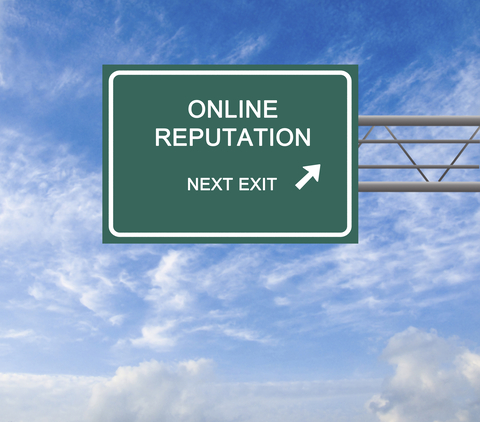 Unfortunately, yes you probably should, but before anyone yells, “invasion of privacy,” I mean the public face of your employee’s social media, so what they post on public forums, Facebook pages, and groups, Twitter, Instagram, etc. You legally can’t ask them for passwords and access to closed accounts, so I wouldn’t recommend it.
Unfortunately, yes you probably should, but before anyone yells, “invasion of privacy,” I mean the public face of your employee’s social media, so what they post on public forums, Facebook pages, and groups, Twitter, Instagram, etc. You legally can’t ask them for passwords and access to closed accounts, so I wouldn’t recommend it.
This periodically comes up when I see employees posting negative content about their employers or, even worse in the case of a boutique hotel many years ago in Maine, posting about guests, by name!
One of my favorite examples is the infamous Damian Cardone, who almost caused the restaurant he worked at to close down because of his public Facebook comments about serving gluten dishes to gluten free guests. And this wasn’t Tavern on the Green, but the restaurant he was working at when he made the posts.
I know it’s one more thing to do on top of trying to do your regular marketing, plus run a business, But…. If any employee’s posts can very negatively impact your business, it’s worth periodically double-checking. Loss of income, especially now, is never a good thing.
Yesterday on a local very active Facebook forum with over 18 thousand members, someone posted a picture of a few people picketing about their workplace’s new mask mandate. Whether you wear a mask or not, or believe we should be vaccinated or not, I’m not going to comment. As someone who last year lost several relatives and friends to Covid, I think you can probably tell where my thoughts lie, and I’ll leave it at that.
On the post, a very vocal young woman was ranting about not getting the vaccine and refusing to wear a mask, and when you hover over her post, you can see where she works.
As someone quite concerned about safety, especially with the Delta variant circulating, this was quite disturbing. She presently works at a local convience store (with the town listed on her profile), and even worse, is a housekeeper/cleaner at a large lodging facility (business name listed on profile). I certainly know I won’t be visiting that local convience store anytime soon nor booking a room at the facility which is in a neighboring state. Which, according to their website has both a mask mandate and an employee vaccination mandate.
I think other people may have commented/messaged both her, and possibly her workplaces about this already because she had removed the information about employment from her Facebook profile as of this morning. I did not report this, but was seriously thinking about it which is why I looked, but someone or someone(s) apparently already did. And I think they posted on the Facebook Business lodging pages reviews tab as well, which was public yesterday, because the review tab is now hidden.
So how many people have those businesses potentially lost or people who have now a negative opinion of the business? Even one is a potential lost customer and loss of revenue and future revenue. From this reference point, on this forum of 18K people, this thread already has 199 comments and who knows how many hundreds or perhaps a thousand or more people have read the post AND the comments and perhaps also saw who this person who ranted worked for…. Food for thought….
If your business falls on that side of the fence where you don’t care if you dissuade people from using your business (for whatever reason), that’s your prerogative and nothing I say or anyone else says will change your mind, so be it. But if you care about your business’s reputation, you should be keeping an eye out.
Sadly, Covid, masking and vaccinations are not the only reason, and the only time, you should be monitoring your employee’s public-facing posts. I have documented hundreds of instances where employees are publicly badmouthing employers, managers, and the businesses that they work at. Great examples for reputation management workshops and I do try to be cognizant of not sharing names of people or businesses unless they are permently closed, like Union Street Guest House, not a case of an employee misstepping online, but instead the owner’s misstepping, but a perfect example of what can backfire online and come back to haunt a business.
This boils down to essential reputation management of your business, where you should be monitoring what people are saying about your business, whether its customers, guests, clients OR employees.
I’d recommend you check your state for what is allowable and what is not in terms of social media and access, as well as specifics on what you are allowed to view on your own company’s computers in regards to employee’s social media. I’d also recommend checking what is considered just cause for termination or fines for employee’s posts.
Posting about bad working conditions or harassment at work falls into personal postings that can’t, and in most cases shouldn’t, be a fireable or finable offense. If an employee is tweeting about being harassed at work, as an employer, you need to look into this pronto, not punish the employee. I’d recommend reading Can You Get Fired if Your Boss Doesn’t Like What You Post on Social Media? from Jackson Spenser Law Group.
NOLO also has a good overview by state, but I would check on your state government-specific website for specifics and the most up-to-date laws as they do change when asking about permissible information to ask and have access to in regards to employee personal accounts.
As a business owner, setting up Google Alerts (free) for your personal name and your business name is suggested. Putting the information in quotes will give you better results.
Periodically doing a Google and Bing search for your personal name and your business name is also suggested (again putting in quotes gives you more specific results), Google Alerts and even the other paid monitoring tools don’t catch 100%.
In terms of employees, before hiring, take a gander at their social accounts (the public side) before hiring. Over 70% of employers do look at that information before hiring, and I have many clients that will ask me to take a look at possible employees who are applying and see what I can find. Considering I’ve found public posts about drinking on the job, stealing products from a current workplace and a lot more that for an emploer would raise some big red flags. It’s scary what’s out there and what people will post publicly.
A tip on looking for a potential employee’s or current employee’s public-facing social media accounts, most people use the same handle or username across most platforms.
Know the law before acting on something that an employee posted. And protect yourself by being proactive; your own business reputation can be at risk. And loss of revenue as well.
From an employee’s perspective, consider what you are posting and where, and who can see it, and the potential repercussions. If you don’t care, again just like an employer’s prerogative to post or believe what they want, that is entirely up to you, but if it meant the potential loss of a job, only you can decide whether it’s worth it or not. If it’s harming the business you work for, that IS on you.
by Heather T. | May 18, 2021 | Marketing

So if you are like most people, you are going “WHAT!!!!!! Facebook Just Changed our Business Pages last year!” Well, folks, Facebook changes business pages looks/formats and options actually about once a year. Sometimes the changes are small, sometimes large, but they do a major revamp approximately every three years and then do some tweaking of settings and looks.
Recently, I had gone through old PowerPoints for workshops I had taught since 2011 and I had screenshots from a decade of Facebook changes. It’s pretty interesting if you have a minute, check it out!
Last year’s change was a major one; this year’s changes are not “quite” as dramatic but do change some things of note.
There have been a few articles written about this, but not many to date, mostly because the switch over seems to be extraordinarily slow for this conversion. Of the 100+ pages, I am an admin on, only two have been switched over so far.
Roaming around on Facebook daily as I normally do for business, I’ve only come across a few other pages so far that have switched. The option to switch does not seem to be connected to the page like count.
You can’t sign up for an early switch, and if you do switch, you apparently have less than a week to decide you want to go back to the old format but no information on how long you can keep that option. Since presumably, we will have to switch over the new format eventually, that one is up to you.
Read a bit more from Facebook about the new version.
About the New Pages Experience (from Facebook) and
Introducing the New Pages Experience (from Facebook)
I do want to mention some of the significant things to note if and when you switch.
- When the option is available, an email will go out to all of the admins and anyone else holding a page role that the new option is being enabled within 3 days. You (and anyone else with any access) will also get a notification in Facebook about it. Please also see notes a few bullet points down re: admins.
- The admin controls are moving to the top (again) right under the banner image instead of on the left.
- Instead of the page administration options of Admin, Editor, Moderator, Advertiser, Analyst, and Custom, this new version only has two admin options. The two being; People with Facebook Access, and People with Task Access. Admin access has full control over everything. Task Access has almost all controls, but it’s more limited. For more specific information, visit https://www.facebook.com/business/help/582754542592549?id=418112142508425.
- Important! Please note that of the pages I admin that have moved to the new format and from several other people I have talked to with the new format. Anyone with access below Admin level with the new page switch will become a full Admin. So your former editors, moderators, advertisers etc. will have FULL access to the page. Please address that immediately, as this also means they can boot you off the page and delete your page as well.
- Page likes go away, but page followers stay.
- Your banner “appears” to be the same size as it was prior, but your profile image moves to the middle of the page and looks like it’s slightly larger than the prior version.
- The new page is basically a “public” profile and has a lot of extra options, not quite sure why a page would want to have: hobbies, sports, TV shows etc., but hey someone I “guess” will find a use for them. The worst part of this, though is there is already some confusion between personal pages and business pages, which was bad enough before, but now this makes it worse.
- A note on the prior bullet point. Currently (for most pages), we have the options of switching page templates, plus we can also hide some tabs (most notably “reviews”). The new option takes away templates. You can hide some of the new options (book etc.), but it does take away the ability to hide the reviews tab and “so far” if you had any external integrations for tabs like an email signup through Constant Contact or Mailchimp or external app application like Woobox (which can bring other social media channels into pages as tabs with other capabilities) no longer. Those options are apparently AWOL in the new version.
- Insights also has some major changes going on. The detail you get now when you check insights is being significantly slimmed down. Facebook does this when this option isn’t used much by users. While there are plenty of people that look at Insights (Facebook’s page analytics), the vast majority don’t. I know this for a fact because 1 out of every 15 people I talk to per month on average about FB business pages has ever actually looked at the Insights. Facebook giveth and Facebook taketh away. I would suggest if you have any interest in tracking past posts, videos, photos, etc. in-depth, you download the variety of data available, and do a last download before switching over to the new format. You can only download the data in 3-month increments, which makes it kind of a pain, but well worth it to be able to have that information if needed.
- I’d also recommend downloading/backing up your page information. While there have (so far) been no reports of data loss or loss of other content. It doesn’t hurt to have a copy anyway….. We had written a post about this prior. Steps to Backing Up Your Personal and Business Facebook Pages.
- Some information from your “About” section does not migrate, so with the page switch you may want to review any information that you had previously, including hiding some of the tabs you might not find applicable or appropriate.
- With current pages, you go to the left and find “Pages” in the list. In the new version, You will switch between your personal profile and your page or pages on the top right, but they don’t call the new version pages anymore, it’s now profiles. (Just to confuse people even more).
- On a smart phone, when you log in to the regular Facebook app it seems to automatically bring you to the page (or in my case) one of the pages I admin, instead of my personal profile so you need to switch back to use your personal account. This may be unique to the iPhone app as I talked to one other person with an iPhone that was running into the same thing and a client with an android phone who had the switch done didn’t think it was happening to him but he is rarely on Facebook.
- This, I think currently is the most annoying thing about the switch. In order to run an ad or schedule a post, you need to switch back to your personal profile to do so. You will also administrate some things through Facebook Business Suite.
I do want to add one more thing of note that Facebook has done without apparently telling anyone. Your formerly private personal accounts (ie, personal profiles), that it used to be someone had to be logged into Facebook to see anything from your account, like your banner photo and personal photo are now public to the world, i.e. people not logged into Facebook at all.
From a business standpoint, this may be a plus; on the other hand, it does expose not just yourself but also any friends who have commented on a personal banner, it allows access (view) to their accounts and makes their comments public to the world. Clicking on the Likes/Loves does not bring someone (not logged in) to a user’s account, but a comment does.
You may also want to see what else is visible now to the whole wide world. Capture your URL, so https://www.facebook.com/yourusername and either open up an incognito window in Chrome, log out of Facebook and put the URL in, or open a browser you don’t use for Facebook and put the URL in. One of the reasons this blog post is titled Jeepers Creepers is because Facebook continues to let the world see your life, whether you want them to or not. Please do note though, there is a fairly new option on your personal profile to add a short line of text plus a website URL, this is public on your personal profile while not logged in. So take advantage of this if you own a business.
I suspect more changes are coming, and I’ll add another post as any new developments that are important for a small business to stay up on are rolled out.
by Heather T. | Apr 21, 2021 | Marketing, Operations

On the second two photos you can see a watermark, see one on the first one? No? But it “might” have a digital watermark.
As anyone who has sat in on one of my workshops or seminars and heard me stress the importance of making sure any photos you use on your website are legal, this will be preaching to the choir. If not, I want to revisit this for anyone who has not heard me rant about the importance of checking provenance.
What IS the provenance of images? Making sure you know where they came from legally.
In the last few years, I’ve lost count of the number of people who have run into copyright-related issues because they, OR their website developers, have run into an issue with copyright and photo/image usage.
If a client provides a photo to a web developer for use on the client’s website, the client is clearly at fault and needs to work with the photographer and/or agency to resolve the copyright claim.
Unfortunately, some web developers also provide stock photos (provenance unknown) for clients’ websites. The client gets hit with a copyright suit, and the web developer does not take responsibility for it, even though they were the ones who supplied the image.
A few more things to note, this can also happen when a web developer (legitimately) buys stock photos for a website. Then a client transfers the site away from the web developer to someone else and doesn’t obtain the licensing information for the photo.
Or the photo is obtained from a “free” stock photo site, and the site is not 100% safe (I’d say most of the free stock photo sites are questionable) because who knows if the photographer claiming ownership is the owner) and you also can’t see what’s called a Digimarc watermark or other types of invisible-to-the-eye watermark systems. Many copyrighted photos have tracked back to Getty Images from free stock photo sites, so I tend not to trust any of them.
I’m particularly anal-retentive about photo copyright because many, many years ago, when I was still doing website design, I obtained a photo that I thought was free and clear from what at the time was a legitimate free stock photo site and used it on a client’s website.
My client received a cease and desist letter from Getty Images, and even though we removed the photo immediately and provided documentation about where the photo was obtained, they still sent collections after her. And the collections agency was calling the inn literally every hour during the day to harass her.
I paid the fee to get it cleared up, because it was my fault for providing the image. Since then, I’ve lost count of the hundreds of people coming my way and looking for advice having run into similar problems. Either they used a copyrighted photo unknowingly or their web developer provided a photo or in a couple of cases, multiple photos and they got nabbed for it.
Very recently, a related issue came up, and this topic reared its ugly head again, so I thought it would be a good time to revisit this.
A website that myself, one of my clients and about a dozen other commercial photographers had a written agreement with an association that in order to use our photos, there were to be photo credits with links back to our websites on the website itself and this was done prior.
The website recently got redone with the new web developer not transferring any photo credits for any of the photos.
I won’t detail the issues and communication that arose from this, but my photos and my client’s photos (which was my primary concern) were removed from the new site as this issue did not get resolved to our satisfaction.
Unfortunately, dozens of other photos remain that need to be credited to the other commercial photographers. If my client had caught this before I had, he would never have reached out and tried to get this resolved; he would have just sent them a cease and desist letter/copyright infringement notice plus tacking on usage fees.
I know some of the other photographers that contributed photos, and I suspect they would and may do the same. I did my due diligence and let both the site owners and web developers know about this, which has not yet been addressed looking at the site this morning.
What bothers me most about the recent issue is that one, the web developer not only failed to transfer the photo credits in the first place. If they were on the old site (which they were) that it should be common sense/a good legal move, to move them as well.
Two, the web developer did not even bother to check the provenance of the photos.
Three, and this is a little detail from above, when asked to give photo credit, added photo credits to photos that were not the photographers, leaving the photographers open to liability for copyright infringement themselves.
For businesses, the takeaways should be:
- Know where you got your site photos. Are they documented? Are they legal? If you have photos on your site that you have had for years, and you are not sure where they came from, it doesn’t mean your safe; it just means you might not have gotten caught yet. Sometimes it can take years for a copyright issue to come up.
- If a web developer provides photos, where is the provenance for them, and will they take responsibility (they should!) if a site they developed for you gets hit with a copyright infringement claim for an image or images they provided? If they refuse to when asked about this issue (and I’d get this in writing), you need to use your judgment about whether that’s someone you want to use as a vendor.
- If you switch web developers, keep in mind you need to either get provenance of any stock photos that the prior site developer has provided for you or replace them with new ones that you know are legal.
- if you buy stock photos from a stock photo site make sure you take a screenshot of the site with the page that photo is getting purchased from including the licensing information. Document, document, document. Sometimes photographers remove their photos from stock photo sites and then do image searches or unscrupulous firms do searches for them (unknown to the photographers). If you have proof it was bought legally, your in the clear.
- If you do source photos from free stock photo sites, include the URL of the page the photo came from and screenshot and date the screen of the page it came from. This won’t protect you from one of the big stock photo companies but may help if a private photographer claims copyright.
Here are a few sites where you can do a reverse image search on your images.
https://tineye.com/
https://www.labnol.org/reverse/
https://smallseotools.com/reverse-image-search/
by Heather T. | Dec 23, 2020 | Marketing, Social Media
A common question I get from friends and clients is what happens if my business page or personal account gets deleted or I get locked out or banned from Facebook? Well in some cases it can be recovered, but in some, it can’t. Most of the concern understandably is about photos that might have been uploaded to a page or profile from a mobile phone and in many instances the copy on Facebook is the only copy.
From a business perspective, it’s not just photo loss, but what if you want to find a copy of a post from last year? Or two years ago? You can sit there for an hour plus and scroll back through all the posts in your insights, but having done that myself several times looking for past post information, set aside an extra hour (or two) to be able to find something, It’s ALOT of scrolling. Being able to download (and sort easily) that information can be very helpful.
Let’s start with the Facebook personal page, Facebook changed how you get to this option fairly recently for both profiles and pages. The last time I reviewed this was back about 3 years ago and there are some definite changes plus it’s always a good reminder.
Step one for a personal profile: Go to the top right of your Facebook account and click on the small downward-facing pyramid to “Settings & Privacy”
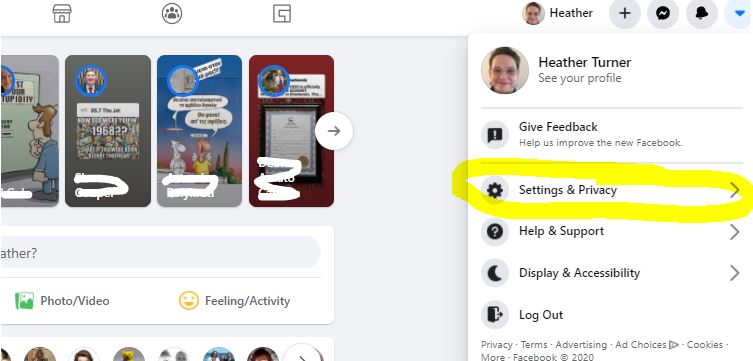
Step 2: Go to “Settings”
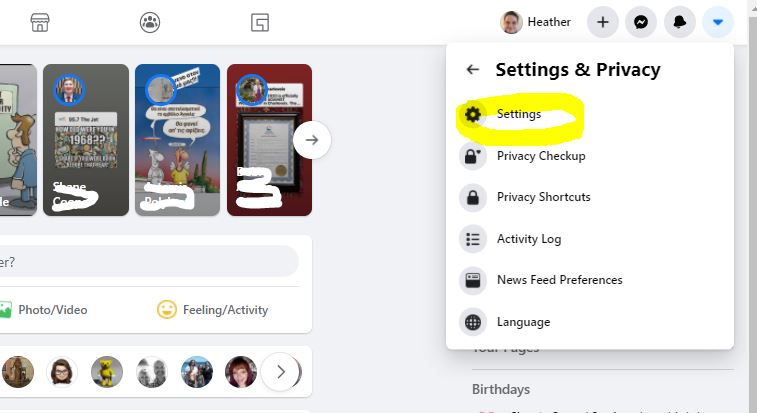
Step 3:**** Go to “Your Facebook Information” and than “Download Your Information”
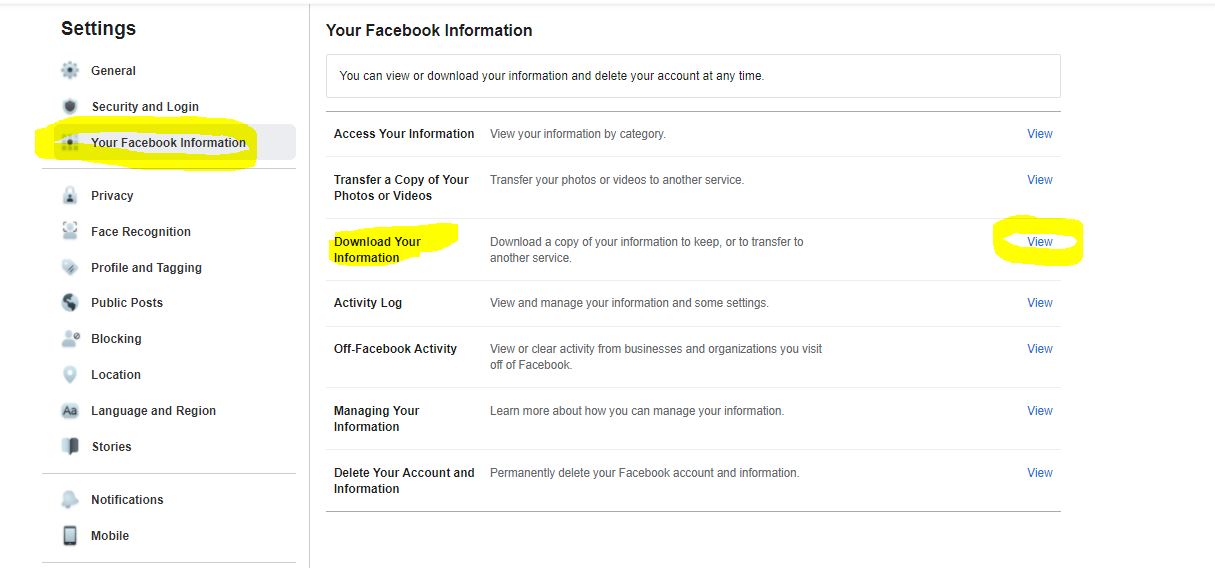
****Facebook frequently changes the options (and many of the settings) in the backend of accounts without letting anyone know, I highly recommend Facebook users go and review what the options are in here at least once quarterly if not more often.
Step 4: if you have everything selected, be warned, it’s going to take a long time to process. So deselect all and than do the ones you have an interest in backing up.
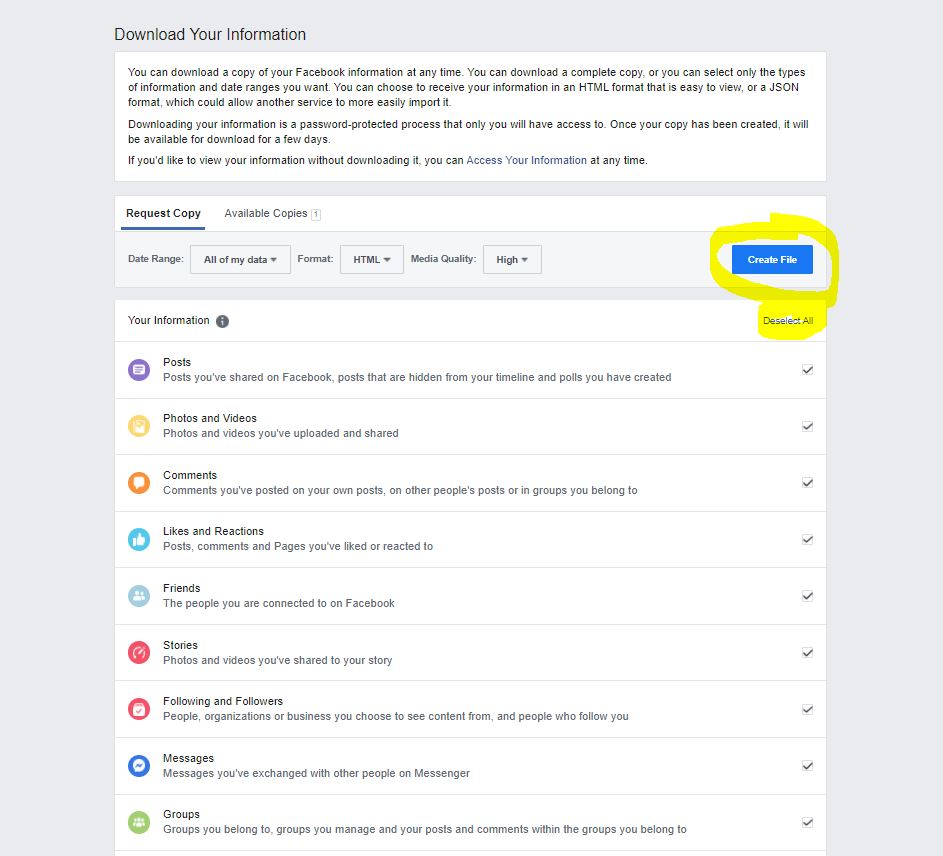
You will get two emails from Facebook, the first saying it’s processing, the second will come when your Zip file is ready to be downloaded. You will also get a red notification on the page above when it’s ready. If you get the second email saying it’s ready and you still had the above page open and it says “pending” refresh the page on your browser.
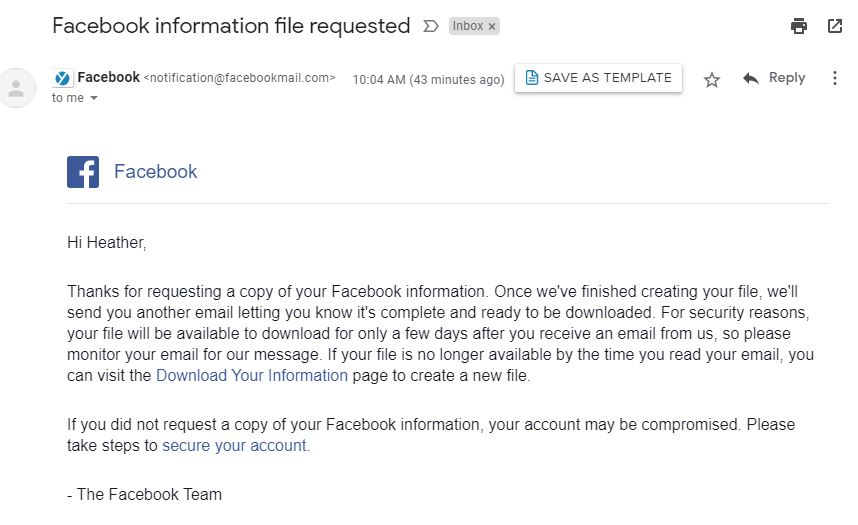
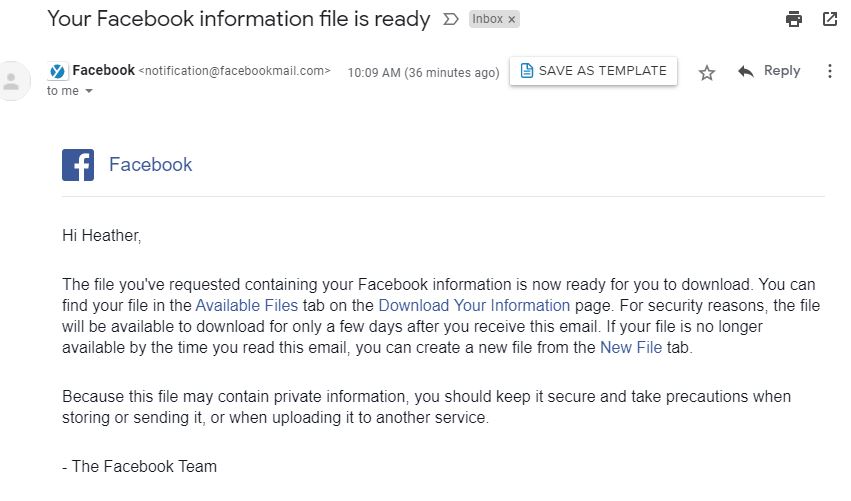
For a business page:
Step 1: On the left hand side of your Business page when you are on as an admin, go to “Settings”
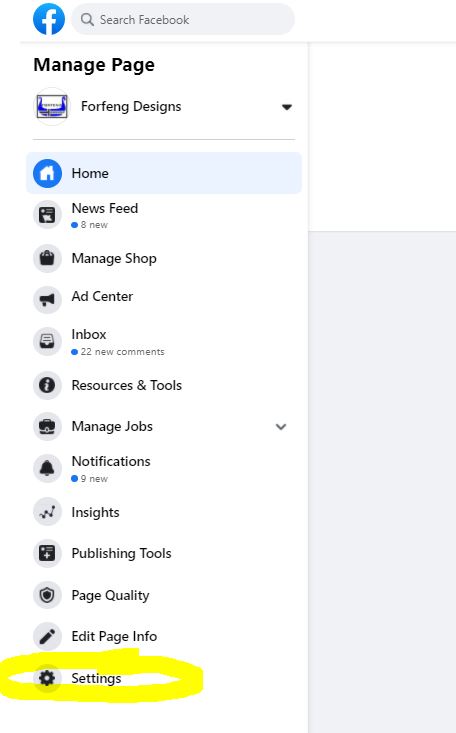
Step 2: On the General tab, go to the middle of the page to “Download Page” and than “edit”. When you click on that there will be another option to hit “Download Page”.
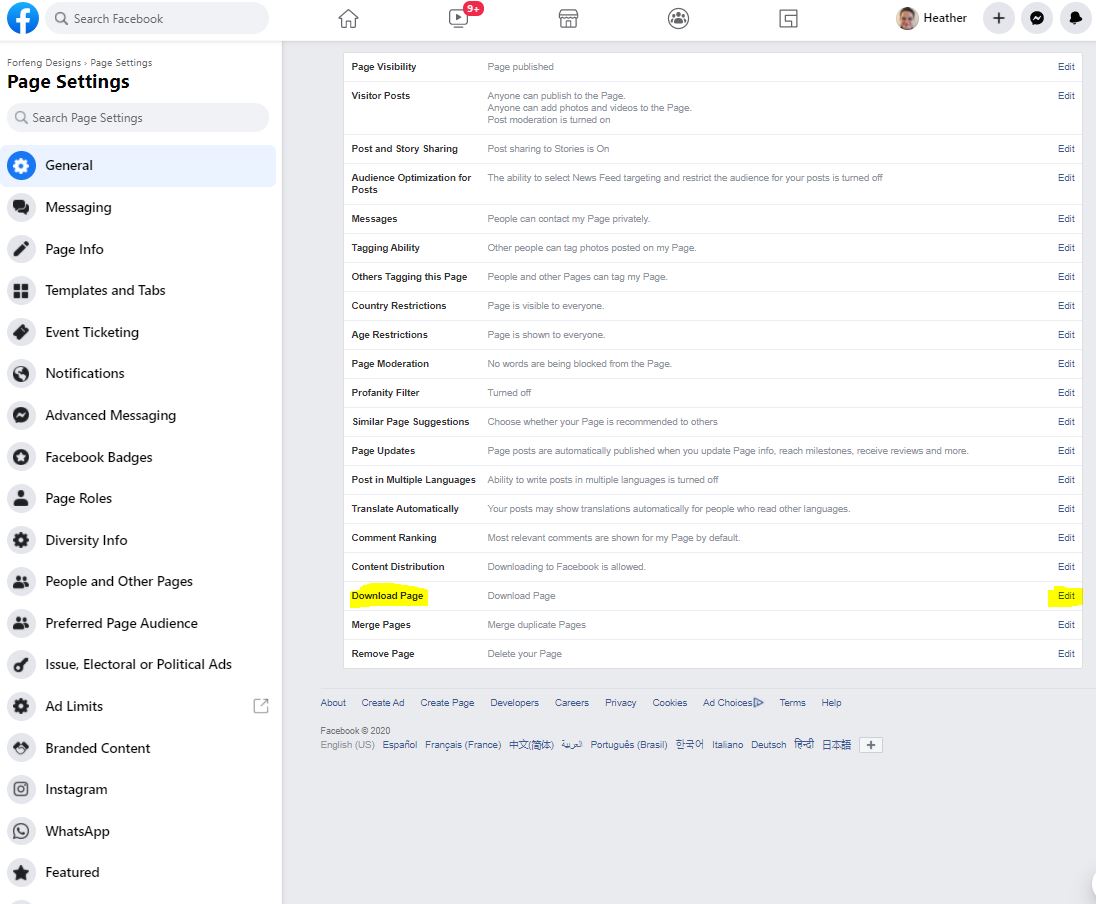

Step 3: You will get a very similar looking page to the personal profile options, but it will say “Download Page” at the top to make sure it’s being differentiated from your personal account.
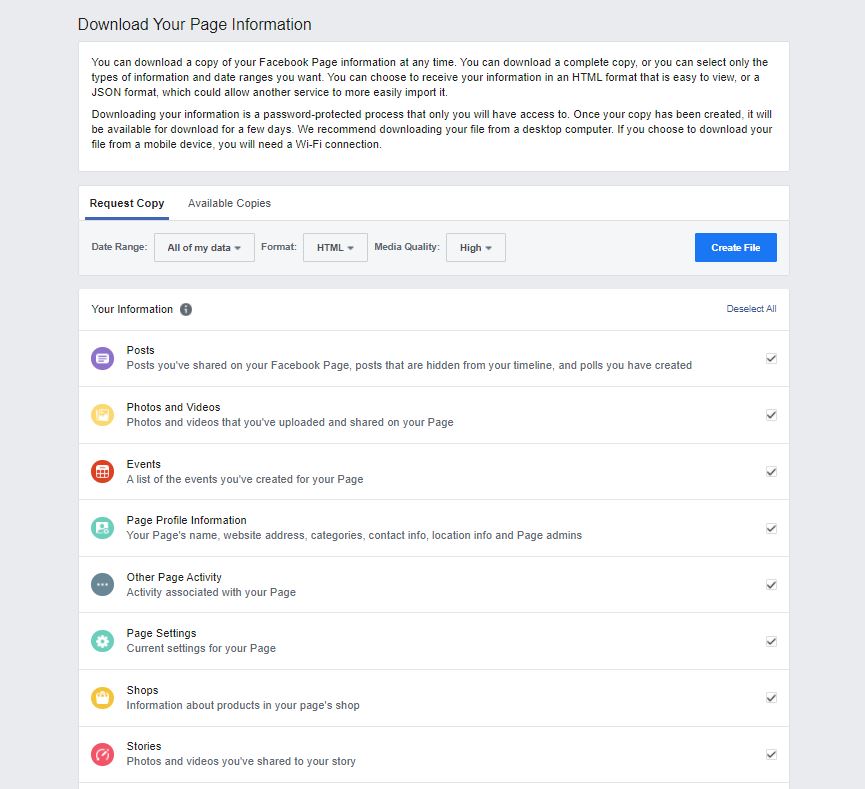
I’d recommend doing this at least once per year for both personal and business at the very minimum, I do this quarterly for any accounts I admin as the last thing you want to have is information that is not recoverable in any way.
I can’t stress enough the importance of backing up not just your social media information but all of the information on your computer on a consistent basis. I’ve talked to so many businesses who say they know they should be doing it and don’t and very much regret it when their computers fail, they have a break-in and their equipment gets stolen or there is a disaster like a fire or flood. If you are on of those people who know you should be doing it, but don’t, I would ask you to ask yourself, “Can my business function and how long will it take (and can I, and my business) recover, if my information is lost, maybe irretrievably forever.
 This is an updated post on one I had done way back in 2010 (yikes it’s hard to believe that it’s been over decade, but still relevent) with bit more information and a couple of additional ideas.
This is an updated post on one I had done way back in 2010 (yikes it’s hard to believe that it’s been over decade, but still relevent) with bit more information and a couple of additional ideas.
 I recently did a Toastmasters two-part speech project and thought it would make a good blog post. The project was to give a speech and then give the speech again based on the first speech’s evaluation.
I recently did a Toastmasters two-part speech project and thought it would make a good blog post. The project was to give a speech and then give the speech again based on the first speech’s evaluation. This week and next, I have the great pleasure of working on a Toastmasters Speechcraft program with a fellow Toastmaster and CIA Instructor. We are working with ten culinary students from all three CIA campuses on the CIA’s Diversity Council Speechcraft program.
This week and next, I have the great pleasure of working on a Toastmasters Speechcraft program with a fellow Toastmaster and CIA Instructor. We are working with ten culinary students from all three CIA campuses on the CIA’s Diversity Council Speechcraft program. Unfortunately, yes you probably should, but before anyone yells, “invasion of privacy,” I mean the public face of your employee’s social media, so what they post on public forums, Facebook pages, and groups, Twitter, Instagram, etc. You legally can’t ask them for passwords and access to closed accounts, so I wouldn’t recommend it.
Unfortunately, yes you probably should, but before anyone yells, “invasion of privacy,” I mean the public face of your employee’s social media, so what they post on public forums, Facebook pages, and groups, Twitter, Instagram, etc. You legally can’t ask them for passwords and access to closed accounts, so I wouldn’t recommend it.










